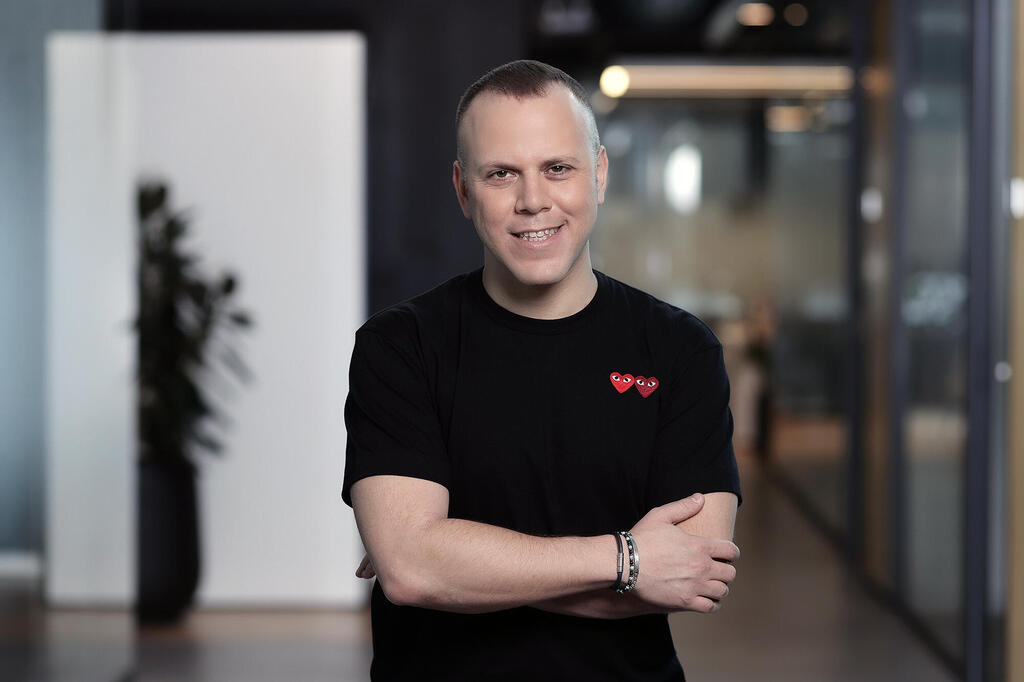
Opinion
Artificial Intelligence Optimization is the biggest CMO opportunity since the digital search revolution
"CMOs who embrace AIO are taking a long-term view. They are investing in discoverability as a brand asset, not a performance channel," writes Asaf Azulay, Partner & CMO at Team8.
In the early 2000s, chief marketing officers were confronted with a defining shift: the rise of the digital era. Search Engine Marketing (SEM) transformed how marketers operated. Instead of vague impressions and traditional media buys, they could now purchase targeted clicks, optimize campaigns in real time, and build performance engines fueled by data. Google Ads became the dominant advertising channel, and with it came a new era of attribution, scale, and tactical precision. It wasn't just a new set of tools; it defined the playbook that we use today, and those who grasped this idea early achieved significant profitability.
Today, CMOs are standing at the edge of an equally significant transformation. AI AIO (Artifical Intelligence Optimization), also known as AI Powered SEO, LLM Optimization or AI Discovery Optimization, is emerging as the most significant marketing opportunity in two decades. But this time, it's not about buying attention. It's about earning trust at scale. That trust must come not only from users but also from the algorithms and language models that now mediate and become the know-all of online discovery. And in this new era, the CMO is poised to take the wheel back, leading the charge and truly shining as the architect of comprehensive brand influence.
Here are 5 of our thoughts on how we at Team8 have begun thinking about AIO as we build this function throughout our brand and our portfolio companies.
Visibility in the Age of Generative Discovery
Traditional SEO was all about visibility: making sure you showed up first in a sea of content. But today's search is far more intelligent and precise. AI-powered platforms like ChatGPT, Google's Search Generative Experience, and Perplexity AI don't just list results; they interpret, synthesize, and represent information. That means your key messaging doesn't just need to appear; it needs to be understood and surfaced by these models.
These models don't just index content. They generate conclusions, offering a synthesized judgment rather than a list of links. For instance, when a user asks "what's the safest cyber insurance for SMBs," the answer they get isn't a collection of URLs. It's a derived opinion, perhaps stating: "Based on expert reviews and user feedback, Provider X is highly recommended for its robust security features and user-friendly interface, making it a strong option for SMBs." In this new paradigm, being present in the conversation is not enough. You must be understood, clear, concise, and come recommended.
Recent data proves just how fast this shift is accelerating. A 2024 survey by Evercore ISI revealed that 55% of Gen Z users now begin their online research with ChatGPT, and 33% turn to Google's generative tools. The average query on these generative platforms is far longer and more contextual than a standard Google search. People don't just type "project management tool." They ask for recommendations based on specific needs, roles, industries, and constraints. This creates an opportunity, and also a challenge, for brands. To appear in these answers, companies must establish a presence not only through their own content but through the broader ecosystem that trains and informs these models. Simply put: If my target audience asks LLMs to "act as" a certain expert when prompting it, I need to be aware of which channels that expert considers trustworthy and prioritize visibility within them
Buying backlinks and puff pieces may have been enough 5 years ago, but today, the machines are far smarter and will judge you accordingly.
The Old Marketing Tactics Don't Work on Smarter Machines
AIO is not merely a marketing tactic; it is brand strategy. Brand is no longer defined solely by the message a company broadcasts. It is increasingly shaped by what algorithms infer from distributed digital signals. These include Reddit threads, GitHub activity, customer reviews on 3rd party sites, product documentation, support forums, employer branding pages, and thought leadership articles. Today, ChatGPT generates your travel recommendations for a luxury hotel chain not by the brand's own site but rather trusted platforms like TripAdvisor, Reddit, and Wikipedia, which were cited most frequently. These are the voices and signals LLMs trust, and they are where brands must now earn recognition.
Building brand presence in this environment means thinking like an architect, not just a copywriter. It requires content that is structured, semantically rich, and easily machine-readable. But it also means thinking beyond your own website. Third-party citations on high-authority blogs, community forums, and trusted publications play a decisive role. "High-signal" locations for LLMs often include academic journals, industry-leading publications, and well-moderated forums with active expert participation. In one case, a startup managed to increase its visibility in ChatGPT simply by being mentioned in a comparison blog post that the model regularly cited. No backlinks were needed. No paid sponsorships. The mere presence of the brand’s name in a high-signal location was enough to influence the LLM’s synthesis layer.
AIO isn't changing how people make decisions, but rather the information sources and paths they follow to arrive at those decisions.
Mind Games: How SEO and Now AIO Play a Role in the Buying Journey
According to Harvard Business School professor Gerald Zaltman, 95% of our buying decisions take place in the subconscious.
Until now, SEO has often been that first touchpoint for buyers. Coming up consistently in search sparks recognition, frames a category, and plants the seeds of trust. And to scale a business, trust is everything. It doesn’t matter how painful the problem you're solving is, if your potential customers don’t trust you, they won’t buy. Customers who doubt the legitimacy of your product are already lost to you.
That’s why trust and SEO have long gone hand in hand. But today, it’s not just about SEO, it’s about building your AIO infrastructure as the next frontier to earn that subconscious trust from your customer.
Because if you can keep showing up in the same category of direct questions that come up in LLMs, much like ranking at the top of Google, you’re far more likely to stay in the conversation and win.
AIO Will Also Shift (and perhaps remove) the Age-Old Tension of the CRO and CMO
The shift to digital marketing and digital sales created internal tension between CMOs, who are responsible for generating leads and online brand presence, and CROs or heads of sales, who prioritize immediate pipeline and conversion metrics. Who truly "owned" the digital funnel and leads? The marketing team that generated the interest, or the sales team that closed the deal? These tensions led to conflicts of authority and a shift of budgets towards sales-driven metrics.
With AIO, that dynamic is about to shift. By embedding intelligence into every layer of marketing operations, AIO allows CMOs to be accountable for the pipeline, demonstrate clear business value, and lead these initiatives across all company levels. This isn’t just about improved attribution; it's a strategic opportunity for marketing to lead growth from the front.
The CMO is Not Just a Storyteller, But the Architect
AIO reflects the evolution of the modern marketing leader. The CMO is no longer just a storyteller or creative director. They are increasingly a technologist, a systems thinker, and a data-driven strategist.
Being the leader that brings in the AIO movement requires a grasp of how very complex algorithms inform ChatGPT, how algorithmic behavior intersects with human psychology, and how the traditional and digital worlds collide.
It also requires buy-in from a lot of areas of the business and an ability to articulate how AIO impacts the whole organization, not just the top of the funnel.
AIO is not the responsibility of a single content marketer. It involves collaboration between:
- Product teams, who must create documentation that can be analyzed and cited.
- Engineering teams, who must ensure crawlability and semantic clarity.
- Sales and customer success teams, who must help turn case studies and customer wins into narrative proof points.
- HR and brand teams, who must maintain employer reputation across platforms like LinkedIn and Glassdoor, which are increasingly crawled by LLMs to assess brand character.
And this is going to be a sector and stage-agnostic challenge that will require buy-in from the entire enterprise.
The CMO Opportunity of the Next Decade
CMOs who embrace AIO are taking a long-term view. They are investing in discoverability as a brand asset, not a performance channel. They are orchestrating narratives across multiple ecosystems. They are also adapting to a world where attribution is harder, but influence is deeper.
In the age of AI discovery, if you are not part of the answer, you are not part of the consideration set. The question is no longer how to rank. It is how to be understood.
Asaf Azulay is Partner & CMO at Team8.















